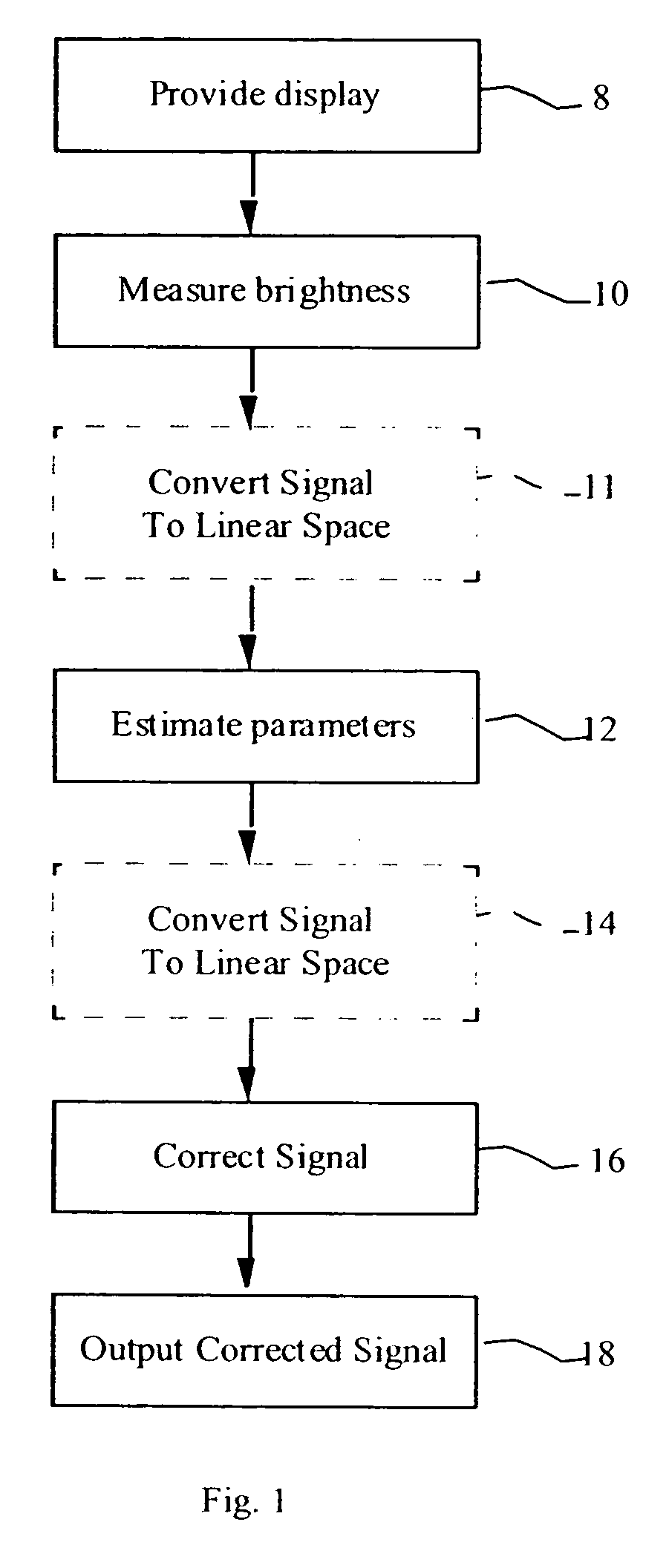Method and apparatus for uniformity and brightness correction in an OLED display
a technology of brightness correction and uniformity, applied in the field of oled displays, can solve the problems of limiting the quality of the display, oled displays suffering from non-uniformity of light-emitting elements, and overall reduction in the dynamic range and brightness of the display, so as to reduce the complexity of calculations, minimize the amount of data, and improve the uniformity of the display
- Summary
- Abstract
- Description
- Claims
- Application Information
AI Technical Summary
Benefits of technology
Problems solved by technology
Method used
Image
Examples
Embodiment Construction
[0019] Referring to FIG. 1, the present invention is directed to a method and apparatus for the correction of brightness and uniformity variations in OLED displays, comprising providing 8 an OLED display having one or more light-emitting elements responsive to a multi-valued input signal for causing the light-emitting elements to emit light at a plurality of brightness levels; measuring 10 the brightness of each light-emitting element at two or more, but fewer than all possible, different input signal values; employing the measured brightness values to estimate 12 a maximum input signal value at which the light-emitting element will not emit more than a predefined minimum brightness (the offset) and the rate at which the brightness of the light-emitting element increases above the predefined minimum brightness in response to increases in the value of the input signal (the gain); and using the estimated maximum input signal value at which the light-emitting element will not emit ligh...
PUM
 Login to View More
Login to View More Abstract
Description
Claims
Application Information
 Login to View More
Login to View More - R&D
- Intellectual Property
- Life Sciences
- Materials
- Tech Scout
- Unparalleled Data Quality
- Higher Quality Content
- 60% Fewer Hallucinations
Browse by: Latest US Patents, China's latest patents, Technical Efficacy Thesaurus, Application Domain, Technology Topic, Popular Technical Reports.
© 2025 PatSnap. All rights reserved.Legal|Privacy policy|Modern Slavery Act Transparency Statement|Sitemap|About US| Contact US: help@patsnap.com



